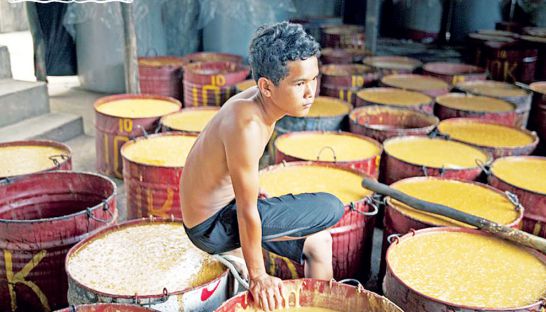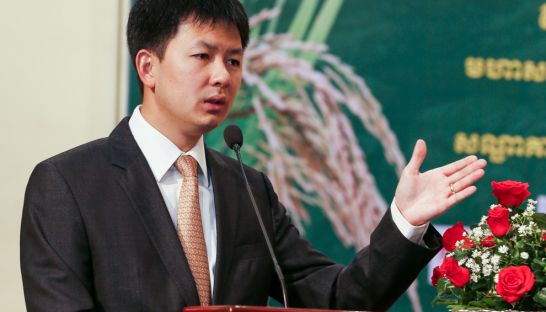Palm sugar finds a sweet market niche
Palm sugar finds a sweet market niche
Demand for Kampong Speu palm sugar has surged, with orders already up 70 per cent this year, as appetite for the premium organic sugar product grows, boosting its price.

Orders for 260 tonnes of the palm sugar have been placed this year, compared with 150 tonnes in all of last year, and despite its market price climbing to $1,400 per tonne, about $50 more than in 2015, Sam Saroeun, president of Kampong Speu Palm Sugar Promotion Association (KSPSPA), said yesterday.
He attributed the higher returns to Kampong Speu palm sugar’s geographical indication (GI) status, obtained in 2010, which assures buyers that the product comes from a specific geographical location and is produced according to tightly controlled quality specifications.
“It is quality palm sugar, as we follow all GI status criteria,” Saroeun said. “We need to have quality palm sugar in order to keep our reputation and the GI status allows farmers to have a better livelihood.”
At $1,400 per tonne, Kampong Speu palm sugar fetches over 50 per cent more than its non-GI local counterpart.
KSPSPA currently has 178 members, who have the potential to produce about 400 tonnes per year and currently export to 16 markets abroad as well as supplying the domestic market. Japan, Taiwan, South Korea and France are leading importers.
Hong Hoeun, president of the Kampong Speu Palm Tree Agriculture Cooperative, whose members account for the bulk of Kampong Speu palm sugar production, said GI status continues to drive demand for their product.
Yet the cooperative’s members are challenged by labour shortages, as youth increasingly seek employment outside the agricultural sector
“The only concern for palm sugar is the lack of labour, as many palm climbers gave up their jobs to work in factories,” he said. “Now only old men are left to collect the palm juice.”
Hoeun claims that each village once had 10 to 15 palm climbers and that 1.2 million palm trees were harvested to collect 70-100 kilos of sugar each over six months.
Now there are only seven or eight palm climbers per village, which has seen the volume of sugar harvested decrease.
“If the government promoted the price of palm sugar, and paid attention to the conservation of palm trees, I would hope that workers would return to the palm business,” he said.
Eang Sophallet, spokesman of Ministry of Agriculture, insisted that the government already actively promotes and supports the cultivation of palm trees and the palm sugar industry.
“Palm trees are important for livelihood,” he said. “The government is seeking new investors for palm farming, specifically Chinese investors, who believe that palm sugar is a great benefit to their health.”














